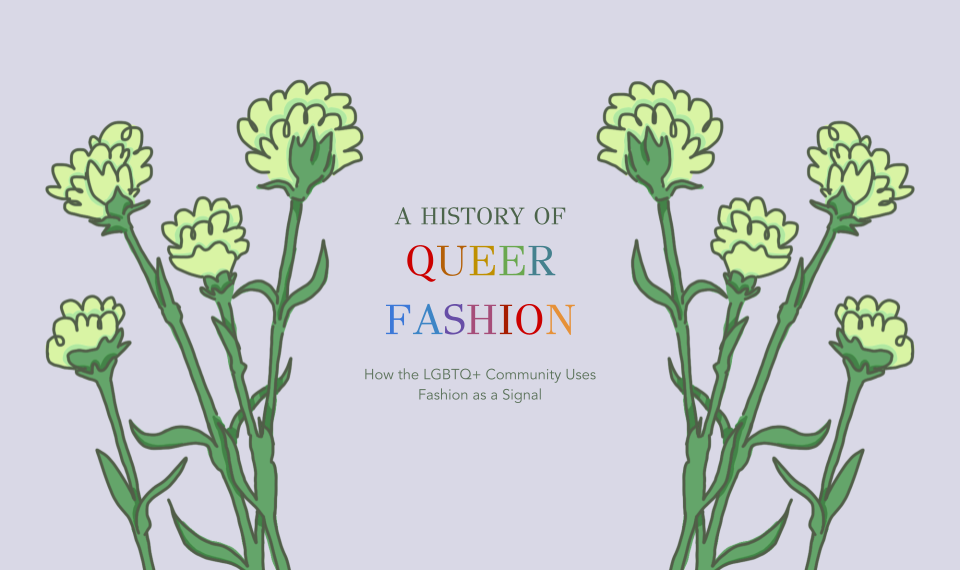A History of Queer Fashion: How the LGBTQ+ Community Uses Fashion as a Signal
Written by Camryn Mahnken
Graphic by Sarah Nash
If you’re LGBTQ+, you’ve probably heard the stereotypes of bisexuals with cuffed jeans, lesbians with carabiners on their belt loops, and queer people sporting button up shirts. There are certain fashion statements that people in the LGBTQ+ community have become associated with, and now use to identify one another. This form of communication through fashion is nothing new but actually dates back many years.
All throughout history, fashion has been used to communicate people’s identities to the world. Because being LGBTQ+ has historically been unaccepted by mainstream society, participating in these fashion identifiers usually happened in secret. The community would use certain accessories or styles of dress to communicate to one another their sexuality without the rest of the world knowing the code. Using fashion identifiers that only the in-crowd understood has been an important part of queer fashion history, with many examples.
In the 1890’s, Oscar Wilde famously wore a green carnation on his lapel to symbolize his queerness. Once it caught on, the green carnation became a hint amongst his peers that the wearer was a gay man. In a time where being gay was not socially acceptable, the flower was used to secretly identify one’s self, a reasoning which would continue throughout queer fashion.
In the 1920’s, when women began dressing more masculinely, many queer women adopted styles with trousers. Though not everyone in the community used this signal, wearing trousers in public was a nod to being a lesbian.
In the 1970’s, the ‘anti-fashion’ movement was originated by lesbian feminists who attempted to dress against the male gaze. They wore clothing items that intentionally didn’t fit into the societal norms and leaned toward more androgynous outfits. These included items like bowties, suit jackets, and baggier silhouettes.
In the 1980’s, gay men used ear piercings to signal to one another their sexuality. While piercings in general were becoming more normalized, gay men saw a single piercing in the right ear as an identifier for queerness. The lack of safety for gay men meant that secrecy was crucial, so these piercings were a form of communication that allowed them to recognize one another without having to out themselves.
More recently, as queerness becomes more accepted, the LGBTQ+ community has several known aesthetics of what different members of the community typically wear. As subverting gender roles in fashion also becomes more normalized, people have more freedom to express themselves and their sexualities through fashion. This has resulted in identifiers being less secret than they have in the past, but still something that most outside the community wouldn’t immediately recognize as queer. Things like shortened manicures on women, dangly earrings on men, or certain hairstyles like shag cuts and mullets are percieved as part of the queer aesthetic.
Fashion is a way to foster community. I’m proud to come from a long line of queer people before me that used clothing to express themselves when it wasn’t always safe to do so. No matter your gender or sexuality, self-expression through fashion is an amazing way to immerse yourself in your communities. Take a note from our LGBTQ+ predecessors: fashion is a way to communicate without even speaking.



